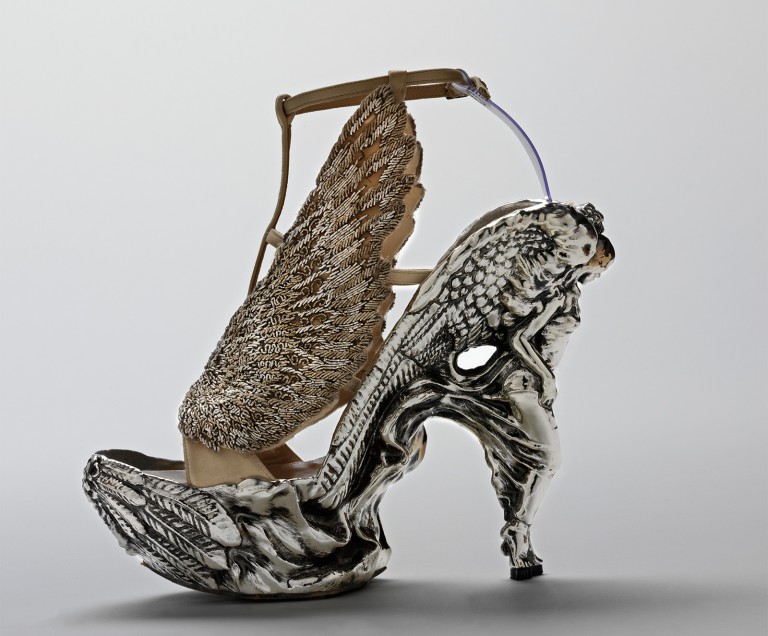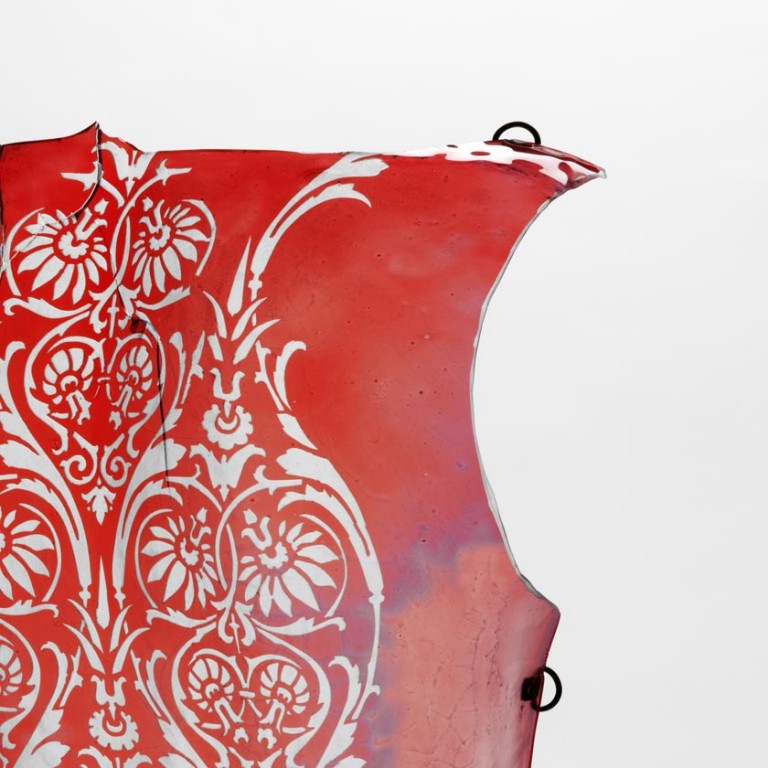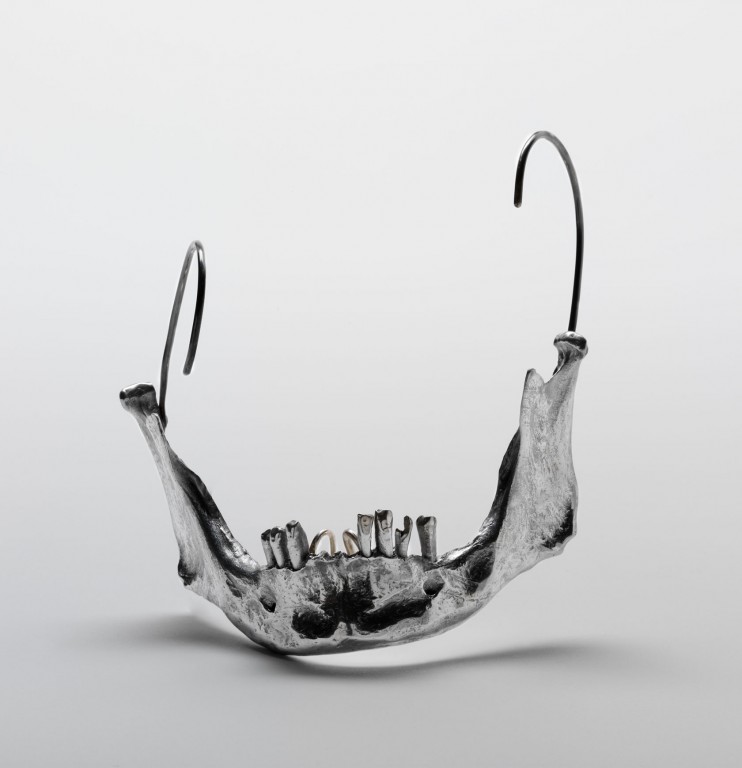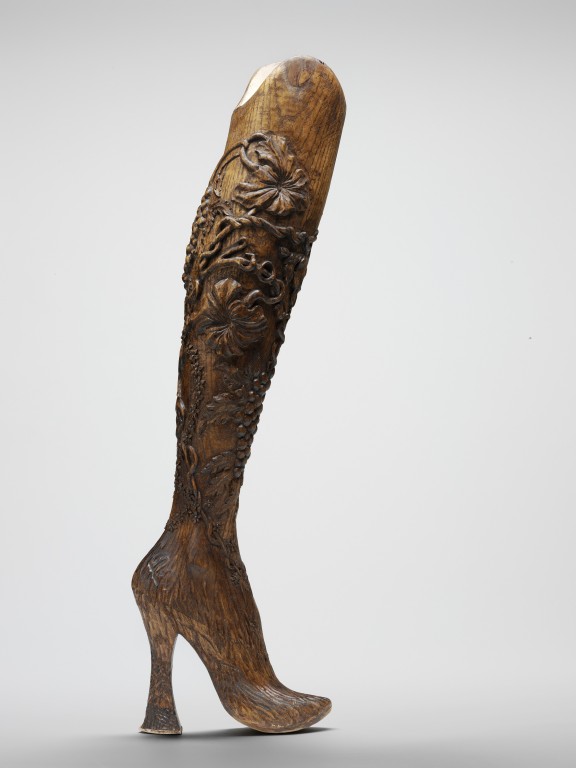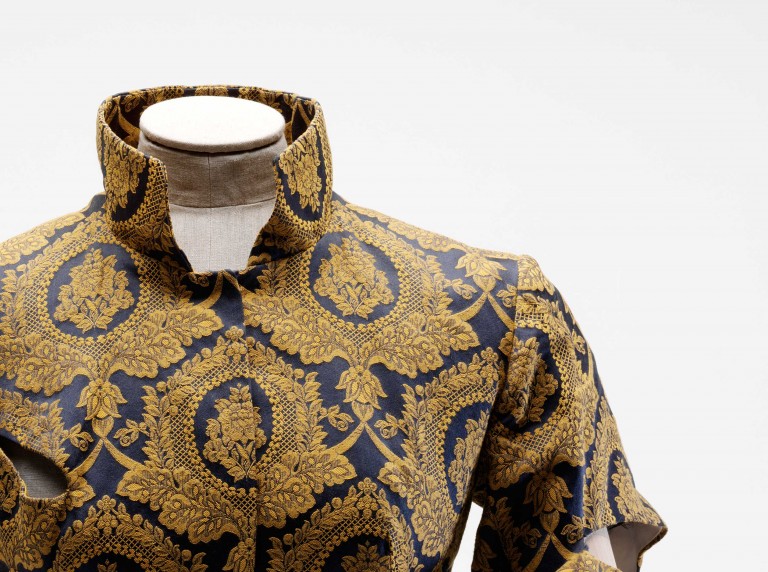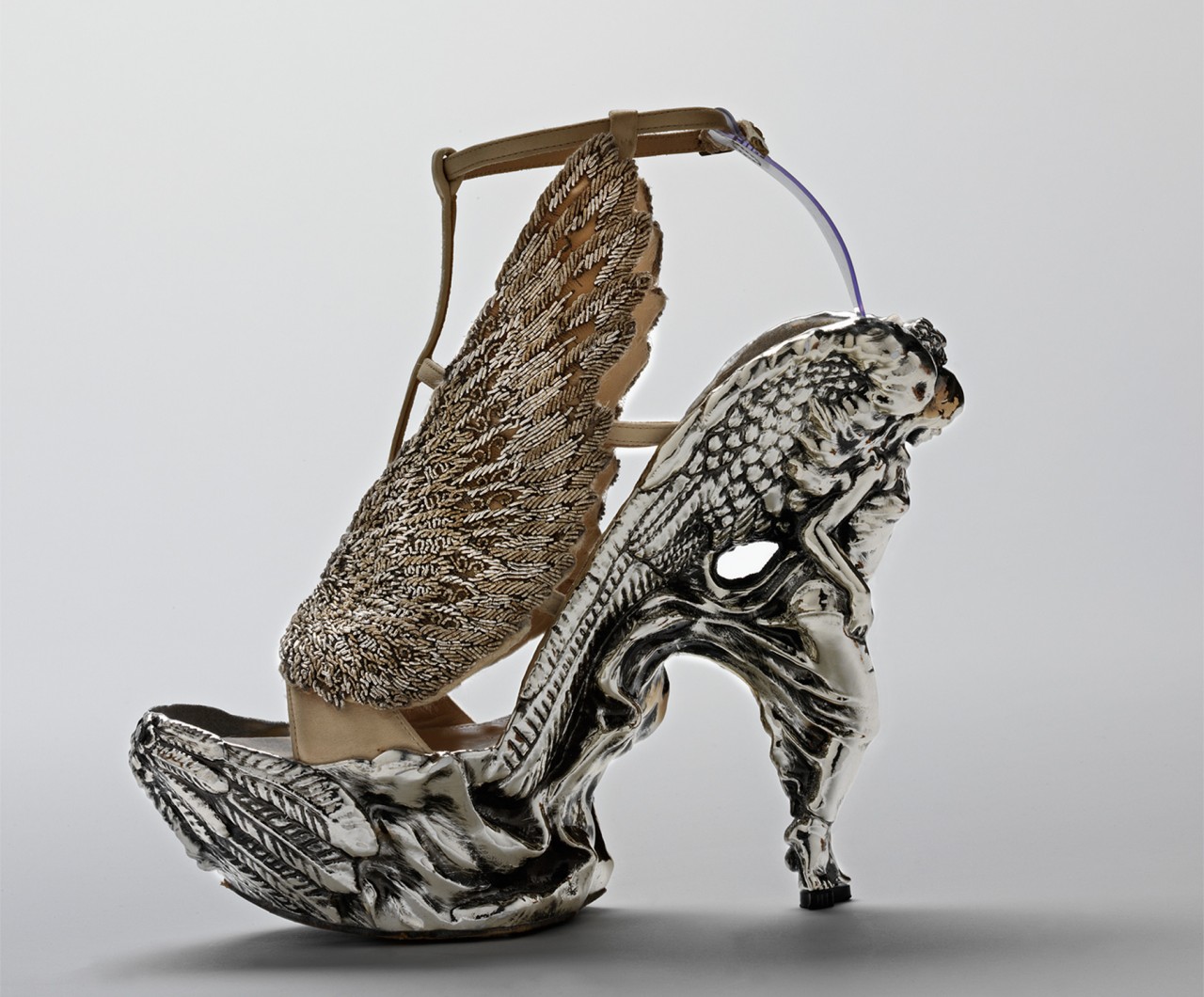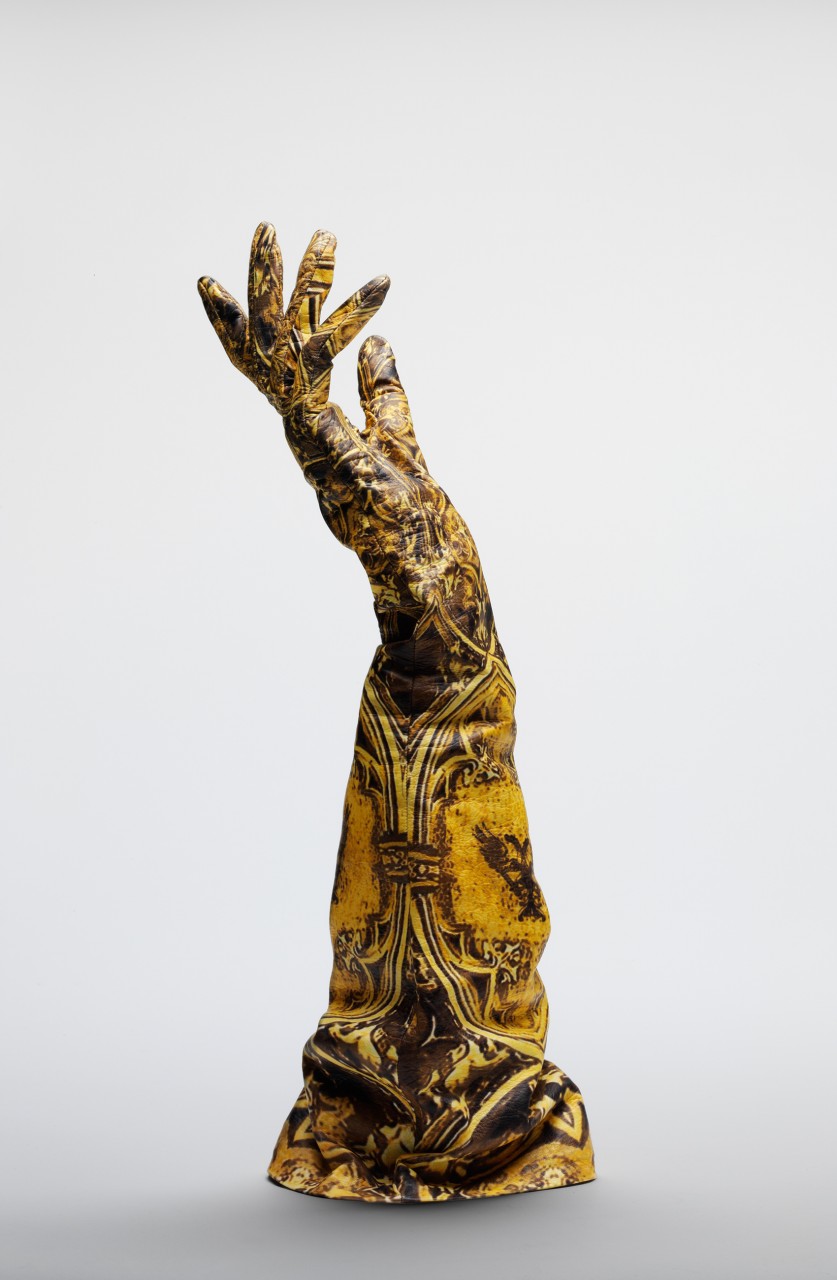ENCYCLOPEDIA OF
COLLECTIONS:
AUTUMN/WINTER 2010
The collection that followed McQueen’s death in February 2010 – unofficially and posthumously titled ‘Angels and Demons’ – was presented in an appropriately sombre manner. Shown in private to seven select groups in a parqueted salon of an ornate eighteenth-century Parisian mansion.
Sixteen designs had been cut on the stand by McQueen and were nearing completion at the time of his death. These were selected for the collection and finished by Sarah Burton – then McQueen’s head of womenswear design – and her team. The final collection under McQueen’s hand drew inspiration from Byzantine art and Old Master paintings. In particular, McQueen honed in on religious iconography, borrowing from paintings and altarpieces by artists such as Hans Memling, Hieronymus Bosch, Sandro Botticelli, Jean Fouquet, Hugo van der Goes, Jean Hay and Stephan Lochner. Entire artworks and specific details were captured digitally and then woven into jacquards, or once again printed and engineered to fit individual garments. Renaissance statuary also provided an influence and was expressed in a pale chiffon gown printed with images of grisaille angels, its fluted skirt recalling carved alabaster.
McQueen harnessed the historical with the modern through his innovative techniques. Despite many designs being digitally rendered, there was a strong emphasis on handcraft that contrasted with the ultra-technological outlook of the preceding collection. There was also an overriding simplicity some designs were cut from a single bolt of fabric and many involved minimal seams. Yet the collection was ornate in places. Shoes crafted from crocodile skin, with gilded, handcarved wooden soles, featured ivy adorned with acorns and evoked the work of Baroque carver Grinling Gibbons. While a silver pair embroidered with wings featured a heel sculpted into the shape of an angel, the signature McQueen skull found expression on an ankle boot. The styling of the collection was also classic McQueen. This time each model wore a burnished metallic skullcap, in some cases bisected with a Mohican of golden feathers. They walked like birds to a suite of classical music by Haydn and Beethoven.
The poignancy of a collection that engaged with the themes of religion and the afterlife, and which was crafted from the most luxurious of materials and techniques, rich silks, duchesse jacquards, satin organzas, gold-painted duck feathers matelassé and fil coupé, was self-evident. As the collection notes that were handed to the audience read, ‘Each piece is unique, as was he’.

